Hanoi Taking their youngest son to an eye exam, Lan and her husband sighed when the doctor concluded that the child had nearsightedness and astigmatism and would have to live with glasses for the rest of his life like his two older sisters.
Previously, Ngan, her second daughter, discovered that her eyesight had decreased since she was 11 years old. At first, the mother noticed that her daughter often squinted or strained her eyes to see, and that her eyes often ached, but she thought it was because her child studied too much. After the teacher reported it, she took Ngan to the doctor and discovered that she was nearsighted at 5.5 diopters. The 21-year-old girl also suffered from astigmatism due to her habit of watching TV at close range and studying in low-light conditions.
Ngan’s older sister also struggled with wearing glasses every day. At first, she could not see the letters on the board, traffic lights, or billboards. A few months later, her parents took her to see a doctor, who concluded that she was 5 diopters nearsighted.
Hoang, the third child, also cannot see far, but hides from his parents and wears his sister's old glasses for long periods of time. When she sees her son having to squint his eyes at his notebook, she takes him to the doctor and agrees to fit him with a pair of nearsighted glasses. After more than ten years of seeing their children wearing thick glasses on their faces, "one was teased for having two pieces of scrap metal on his face, another was asked by the whole family to learn from each other to wear glasses to look cool", making the couple feel sad and blame each other for not keeping up with their children.
Similarly, Ms. Hue, 30 years old, living in Gia Lam, is often away from home, leaving her child with her grandmother. To coax her child to eat, she lets her child watch the phone, iPad and TV many times a day. For the past three months, she has noticed many strange signs in her child such as rubbing, squinting and crying. People advised her to take her to an eye doctor, but she thought that a 4-year-old child could not be nearsighted.
Recently, the child had headaches, had to hold the phone close to his eyes, and went to school slower than his friends. When she went to the University of Medicine and Pharmacy Hospital for a check-up, she was shocked to learn that her child was both nearsighted and astigmatic, and had to wear glasses to ensure daily activities. In particular, the child's astigmatism was up to 6, with a risk of amblyopia. Amblyopia is a condition in which one or both eyes are weak due to strabismus, refractive errors, or eye diseases. After the age of 7, the chance of curing amblyopia is very low, and the patient faces the risk of blindness.
"It was my negligence that caused my child's eyesight to deteriorate severely. If I had known earlier and had examined him promptly, the situation would not have been as bad as it is now," said Ms. Hue.
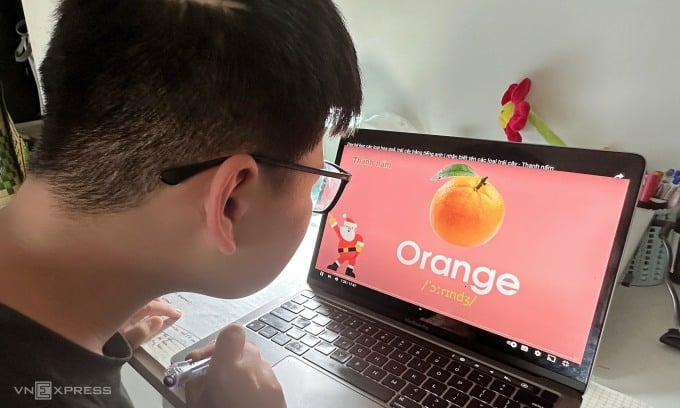
Frequent exposure to electronic devices in limited light conditions can increase the risk of refractive errors. Photo: Nhu Ngoc
Vietnam currently records more than three million children with refractive errors, of which 10-15% are aged 5-6 living in rural areas and 20-40% are in urban areas. After the pandemic, this rate tends to increase. According to a survey by VnExpress , most hospitals recorded a 30-50% increase in the number of children with refractive errors coming for examination, mainly in the school-age group.
Dr. Hoang Thanh Tung, Department of Ophthalmology, Hanoi Medical University Hospital, said that after the pandemic, many families brought their children to have their eyes examined due to reduced vision, squinting, and limited ability to learn in class. Many children also had watery eyes, sore eyes, and rubbed their eyes more often. Symptoms usually subside after a few hours, or last longer when children do not have to focus on close-up vision.
Explaining the reason for the increase in the number of cases coming to the clinic for refractive errors after the pandemic, Dr. Pham Huy Vu Tung, an ophthalmologist - Examination Department, Tam Anh General Hospital, Ho Chi Minh City, said that due to the impact of the epidemic, children were not examined regularly, while parents were subjective, negligent, and did not closely monitor, leading to serious conditions and forced to wear glasses. Mr. Tung has received many cases of late examination due to fear of Covid, delaying going to the hospital or thinking that the child was too young to be nearsighted, so he did not go for a check-up.
In addition, during the pandemic, students are often exposed to electronic devices, plus limited space, unable to participate in outdoor activities, limited exposure to natural light. Most children watch TV or phones for many hours at close range, leading to eye strain and reduced vision.
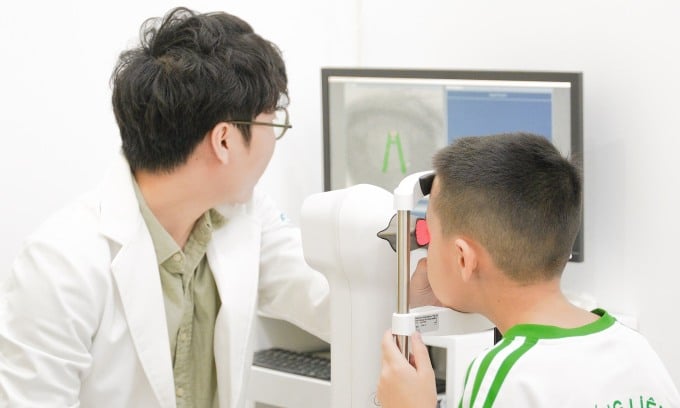
A doctor at the FSEC Children's Eye Center is examining a child's eyes. Photo: Doctor provided
Dr. Ha Huy Thien Thanh, FSEC Children's Eye Center, said typical signs that help parents recognize early myopia in children include blurred vision, squinting, moving closer to watch TV, and tilting the head. Some complications of high myopia include retinal detachment, causing irreversible vision loss, cataracts, and glaucoma. Therefore, controlling your child's myopia requires intervention as soon as possible.
"However, treatment in children is still difficult because children do not have enough awareness of the dangers of the disease and do not have the consciousness to comply with recommendations," said Dr. Tung, adding that parents need to proactively observe and take their children to the doctor early when they see abnormalities, to prevent children from developing amblyopia. Children who are discovered and treated after the age of 7 are almost unable to overcome the disease, and their vision will never recover. By adulthood, their eyesight will be poor, sometimes only 2/10, which greatly affects work and daily life.
In addition, children with myopia can wear glasses or have surgery but it does not completely cure myopia. Therefore, parents and teachers should regularly remind children to ensure good sitting posture, not to bend their heads down to the table, to give their eyes a break during recess, not to read books and newspapers in the dark, not to watch TV and use electronic devices such as smartphones, tablets, laptops for too long.
Increase physical activities, play outdoor sports. Regular monitoring for early detection and appropriate treatment for the child's level of myopia. The daily diet needs to be full of nutrients and supplemented with food groups rich in vitamins A, C, omega, DHA, Lutein, Zeaxanthin, blueberries to help keep eyes healthy.
When you have dry eye symptoms, you can use saline solution to clean your eyes. Add foods rich in vitamin A and increase orange vegetables to your daily meals.
For children who are not nearsighted, parents should limit the time they spend using electronic devices, increase the time their children spend outdoors, and divide their work time into smaller chunks. In addition, parents should take their children for regular check-ups to screen for eye problems and treat any abnormalities promptly.
Minh An - Nhu Ngoc
*Character names have been changed
Source link


![[Photo] General Secretary To Lam and international leaders attend the parade celebrating the 80th anniversary of the victory over fascism in Russia](https://vphoto.vietnam.vn/thumb/1200x675/vietnam/resource/IMAGE/2025/5/9/4ec77ed7629a45c79d6e8aa952f20dd3)

![[Photo] Russian military power on display at parade celebrating 80 years of victory over fascism](https://vphoto.vietnam.vn/thumb/1200x675/vietnam/resource/IMAGE/2025/5/9/ce054c3a71b74b1da3be310973aebcfd)
![[Photo] Magical moment of double five-colored clouds on Ba Den mountain on the day of the Buddha's relic procession](https://vphoto.vietnam.vn/thumb/1200x675/vietnam/resource/IMAGE/2025/5/9/7a710556965c413397f9e38ac9708d2f)

![[Photo] Prime Minister Pham Minh Chinh chairs a special Government meeting on the arrangement of administrative units at all levels.](https://vphoto.vietnam.vn/thumb/1200x675/vietnam/resource/IMAGE/2025/5/9/6a22e6a997424870abfb39817bb9bb6c)


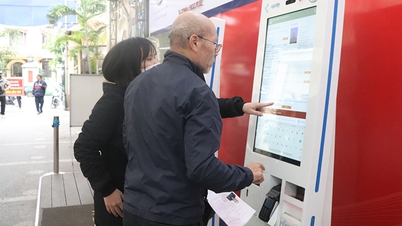




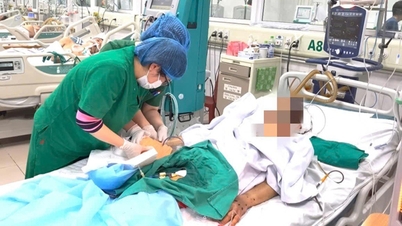


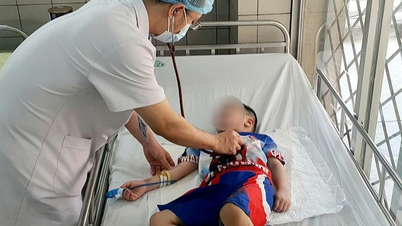


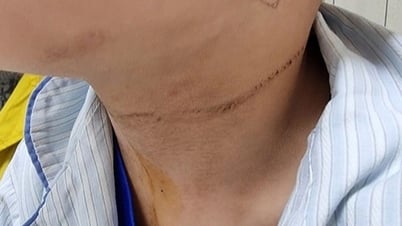

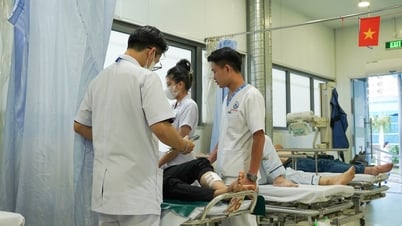













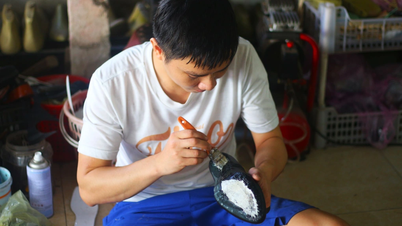

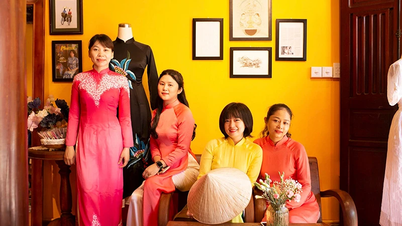










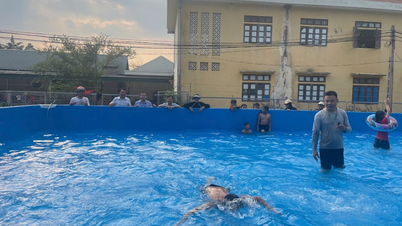


















































Comment (0)